To begin with, let's clarify the essentials. A peer-to-peer marketplace is a model in which individuals interact directly with each other to buy and sell products or provide services.
Despite the economic hurdles, peer-to-peer (P2P) marketplaces are lucrative. According to Precedence Research, the global peer-to-peer lending market was valued at $110.9 billion in 2023. This scope is expected to hit over $1,168.1 billion by 2033, with a registered CAGR (compound annual growth rate) of 26.6% from 2024 to 2033.
Before building your online marketplace with a P2P model, it is necessary to study all the nuances. For example, you should analyze which marketplace business model to choose, which stages of development are expected, and how much it will cost. We cover these topics below so you will know precisely what you should do to launch a thriving P2P marketplace.
Let’s get into it.
What are peer-to-peer marketplaces?
In fact, peer-to-peer marketplaces are online platforms where people who want to sell their products or services meet people who search for these goods or services. The basis of the P2P marketplace is the community's resources and activities. Most importantly, marketplace owners ensure reliable interactions and payments on these platforms. Therefore, in peer-to-peer marketplaces, two roles are available simultaneously: buyer and seller.
Let's now expand in more detail on the main types of peer-to-peer marketplace businesses.
Main categorization of peer-to-peer marketplace platforms
There is a large selection of marketplaces on the global market according to various criteria that meet users' requirements. To face the competition, marketplace owners create different peer-to-peer websites depending on the items or services.
Peer-to-peer marketplaces fall into the following common categories:
- By location - local and global;
- By offer - service and product;
- By category coverage - horizontal and vertical.
Let’s look at each of them in more detail and with top marketplace examples.
Local and global P2P marketplaces
First of all, we can distinguish peer-to-peer marketplace types by the scale of their activities. Therefore, local peer-to-peer platforms are fixed to a particular country or region. For example, the German mail-order company OTTO is a vivid example of such a peer-to-peer marketplace platform. This company specializes in retail e-commerce, real estate, and financial services.
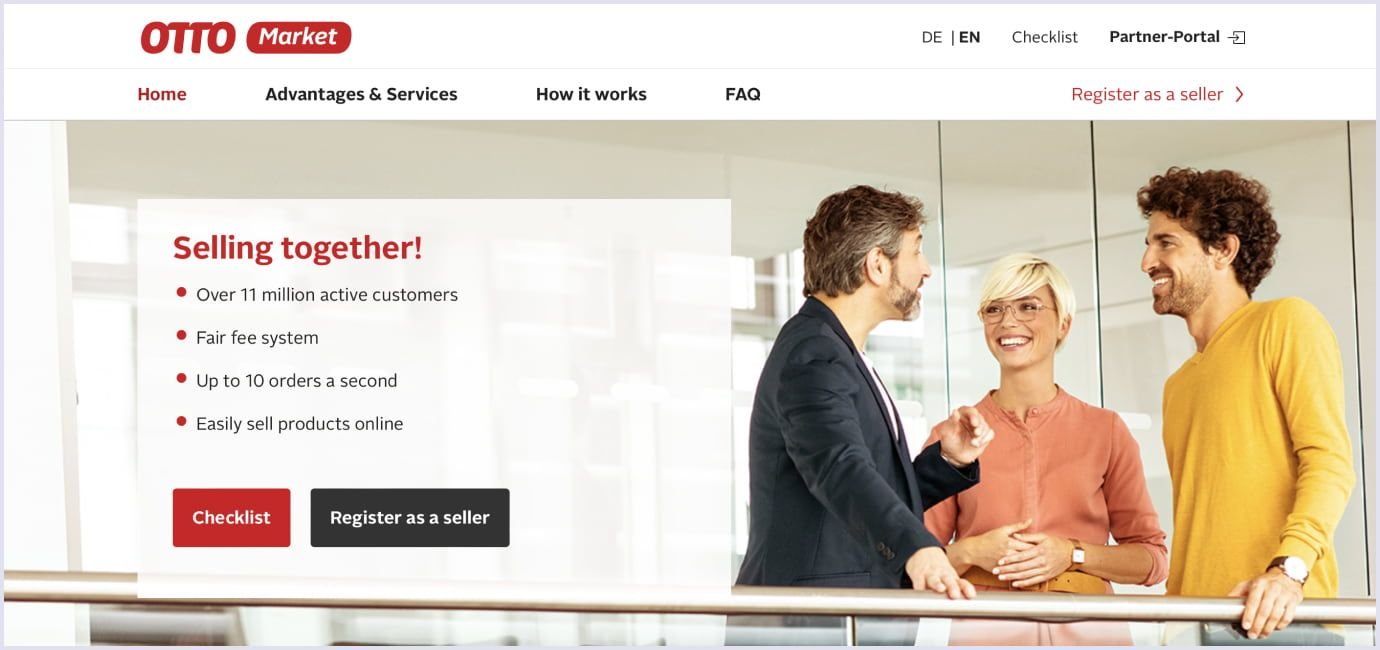
On the other hand, there are global peer-to-peer marketplaces. These operate in different parts of the world and have millions of users.
For example, we can take the famous business giants Amazon or Airbnb. Amazon is one of the most valuable brands in the world, specializing in e-commerce, online advertising, and artificial intelligence. In turn, Airbnb is an American company that operates an online marketplace for short-term homestays and experiences.
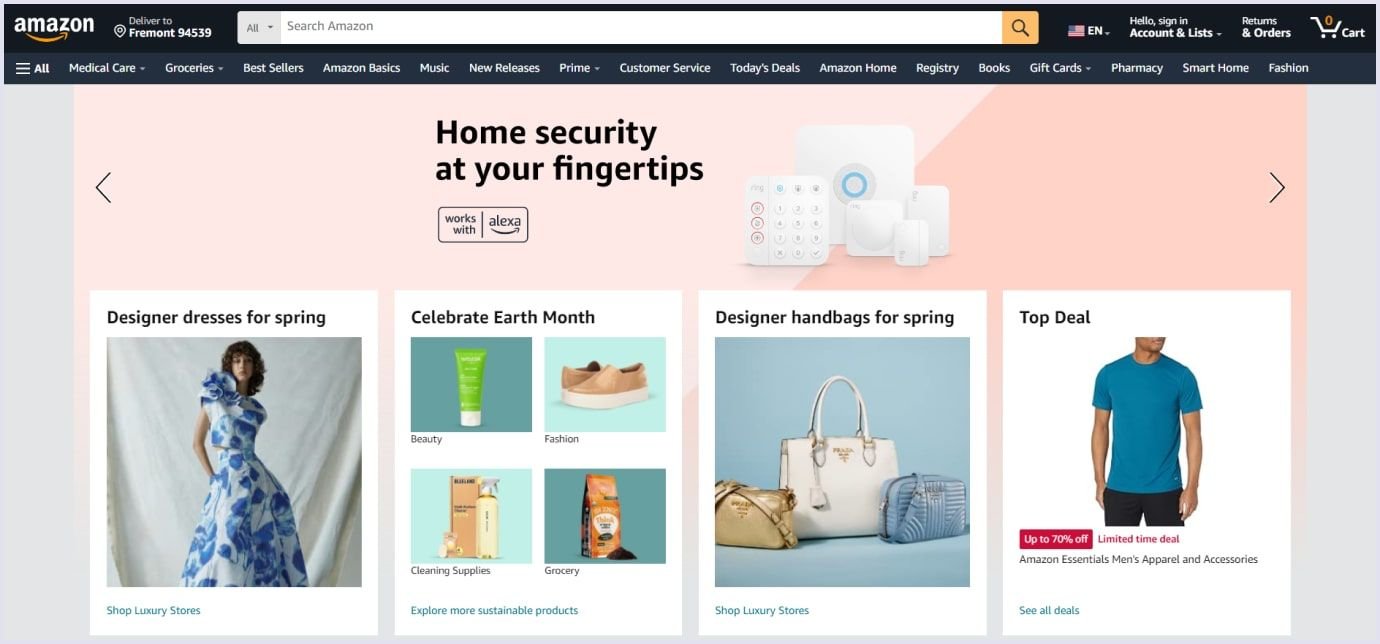
Service and product P2P marketplaces
They offer a convenient online marketplace platform for service providers and their consumers where they can satisfy each other's needs. For example, online educational classes, selling culinary products, and travel guides are popular categories.
Among other famous P2P marketplace examples are Uber, Lyft, Helpware, TaskRabbit, and Fiverr.
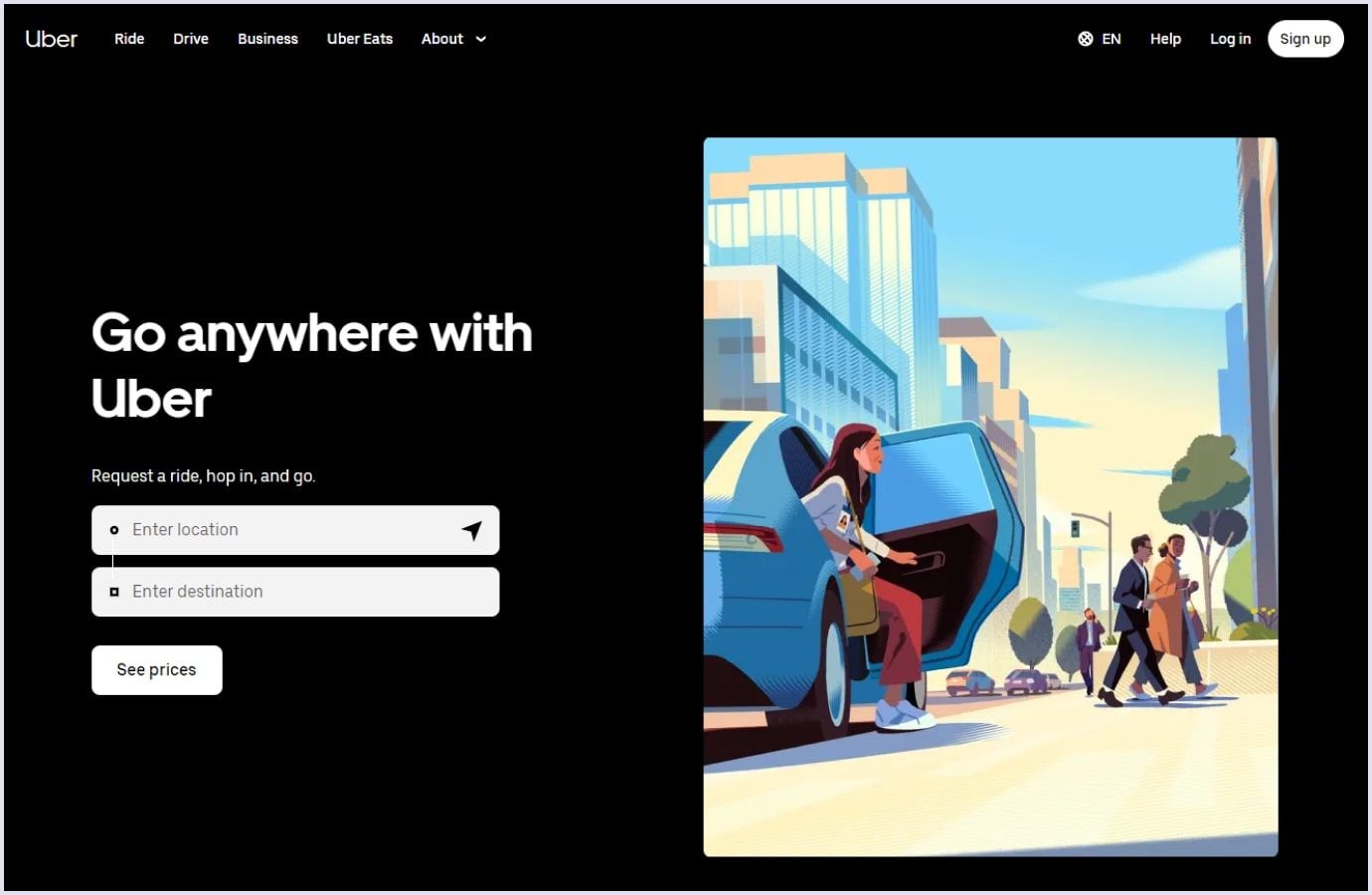
Trade A Boat
At Codica, we have a rich experience building various solutions. In our portfolio, you can find many compelling examples, including service P2P platforms. For example, our team developed a boat selling website in Australia. With Trade A Boat, you can participate in the process of buying or selling new or used boats and marine equipment.
Our specialists built a modern, robust, and fast-loading web solution. These characteristics positively influenced the platform’s rating system, increasing the number of user visits. Thanks to our improvements, the client has increased the conversion rate by 480%. Also, we customized the function of choosing different packages to promote advertisements and increase sales for private sellers and dealers.
In addition, our team created a new UI and UX design for the boat sales website to make it user-friendly. The new look of the online marketplace platform for boats helped our client improve customer satisfaction and improve user engagement.
Below is the customer review video of this boat buying marketplace.
It is also worth mentioning that P2P product marketplaces are an influential subject of online trade. These e-commerce platforms ensure the interaction of sellers with consumers for the subsequent purchase of physical or online products. In peer-to-peer product marketplaces, sellers can list products online for a transaction fee or charge fees.
Peer-to-peer product marketplaces generally include seller or buyer accounts, free listings, search and navigation systems, shopping carts, and browsing systems.
By the way, eBay is a trendy peer-to-peer product platform. Let’s check it in more detail.
eBay
In particular, eBay enables a large target audience to buy/sell various goods, such as clothing or electronics. The platform derives most of its revenue from advertising and sellers who receive a limited number of free listings.
According to the Statista report, eBay was the second most popular e-commerce and shopping website worldwide, accounting for more than 3.01% of desktop visits to sites in this category as of December 2023.
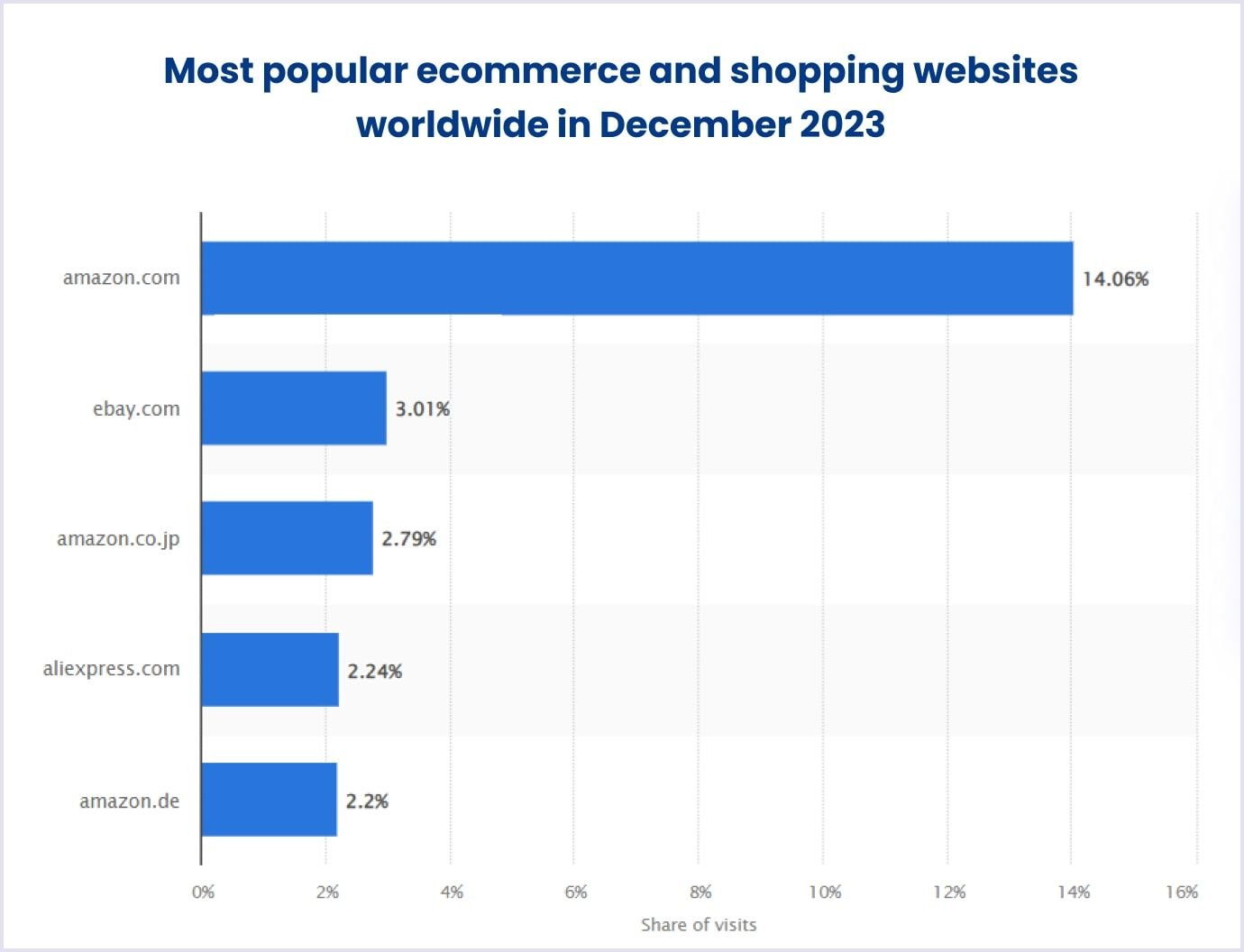
Horizontal and vertical P2P marketplaces
It is essential to understand that the horizontal peer-to-peer marketplace provides users with an extensive range of products and services, from clothing to software. The horizontal marketplace covers a large customer base, allowing you to sell almost anything.
Which global companies belong to horizontal peer-to-peer marketplaces? First of all, we are talking about Amazon and AliExpress. These online platforms offer a vast range of products in different niches.
Statista reports that the online retail giant AliExpress bridges the gap between third-party sellers and consumers worldwide. Between July 2023 and December 2023, the website garnered approximately 2.9 billion visitors, constantly achieving around 431 million monthly visits.
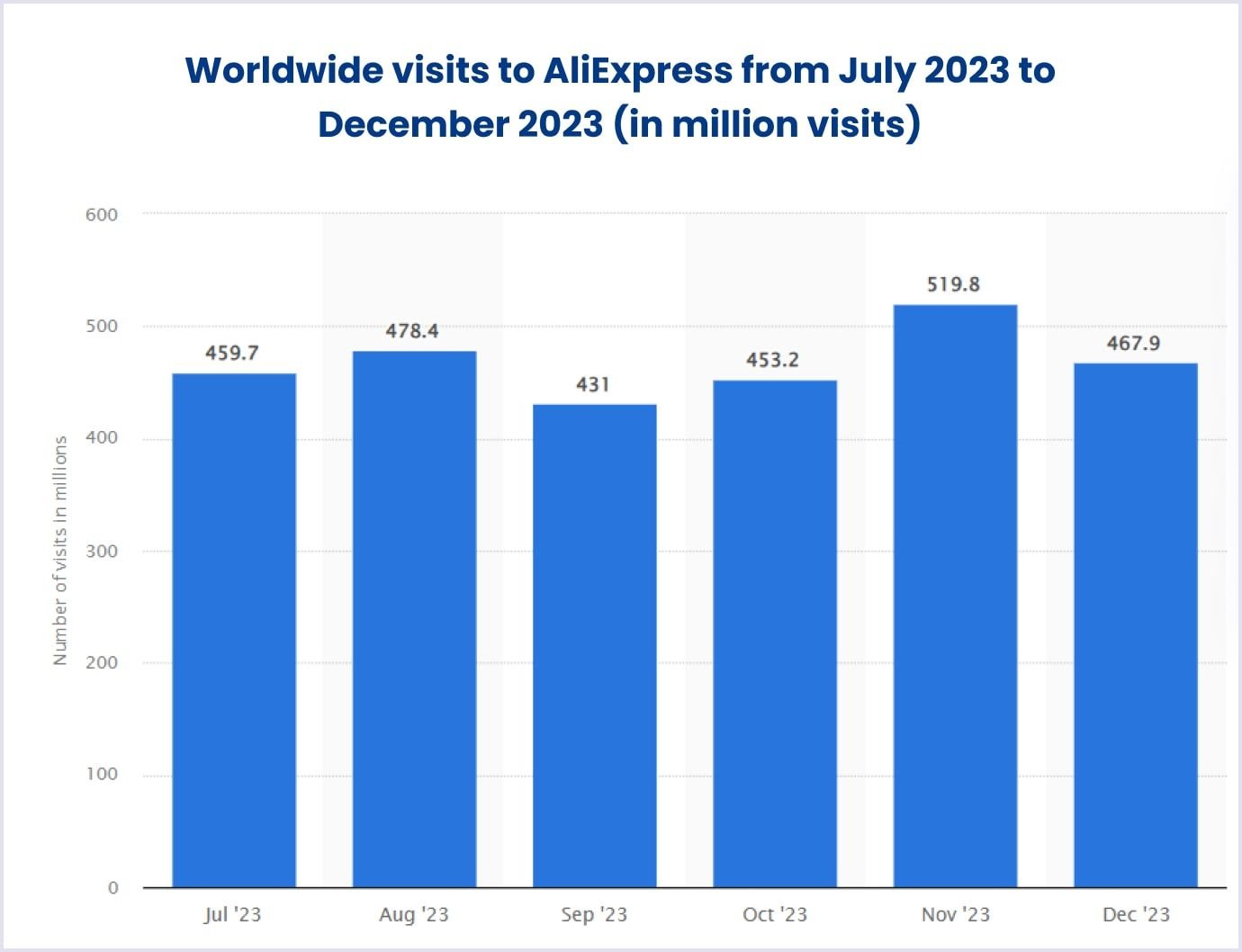
On the other hand, vertical peer-to-peer marketplaces are also very popular. They are aimed at a limited target audience and are focused on one specific niche. The vertical P2P business model is an effective method of developing a profitable business and increasing sales. It will be easier for you to satisfy the needs of limited user groups than a vast audience. As a result, you can provide your target audience with a more personalized customer experience.
Famous examples of companies following vertical peer-to-peer websites include Uber, Etsy, Airbnb, and Booking.com.
Another example of a marketplace specialized in a single market sector is an activity booking marketplace built by Codica. Our team created a personalized service marketplace to connect parents with providers of kids’ activities.
This online service marketplace allows parents to find after-school activities based on their children’s interests, family preferences, location, and budget. The P2P marketplace platform has convenient account management and administrative dashboards. It allows parents to plan activities for their children and coordinate them with family and friends.
Let's watch a customer review video from our client, David Watkins, founder of PlanMyKids. He discusses the development goals for the peer-to-peer service marketplace and how Codica helped him overcome the relevant challenges.
Benefits of peer-to-peer marketplace platforms
Fortunately, peer-to-peer marketplaces offer several advantages for successful business entrepreneurs. Let's explore these benefits in more detail to understand them better.
Autonomy for customers
You give marketplace customers autonomy. They provide and buy services and products on their terms and agree on procedures between themselves. Thus, your peer-to-peer ecommerce platform maintains low prices and more transactions.
As an encouraging bonus for your customers, you can offer verification of buyers and sellers for better safety and cover maintenance costs for service providers, like drivers. This will enhance their experiences with your P2P marketplace platform and show it as a trustworthy platform.
P2P network effects
Another benefit of peer-to-peer websites can be built-in network effects that help companies scale more quickly. If early users increase the overall value of the platform, then the business has a network effect.
In fact, peer-to-peer network effects significantly impact your business development and solve the chicken and egg problem. The scheme is simple:
- more customers - more demand - more suppliers;
- more suppliers - more choice - better customer experience - more other users.
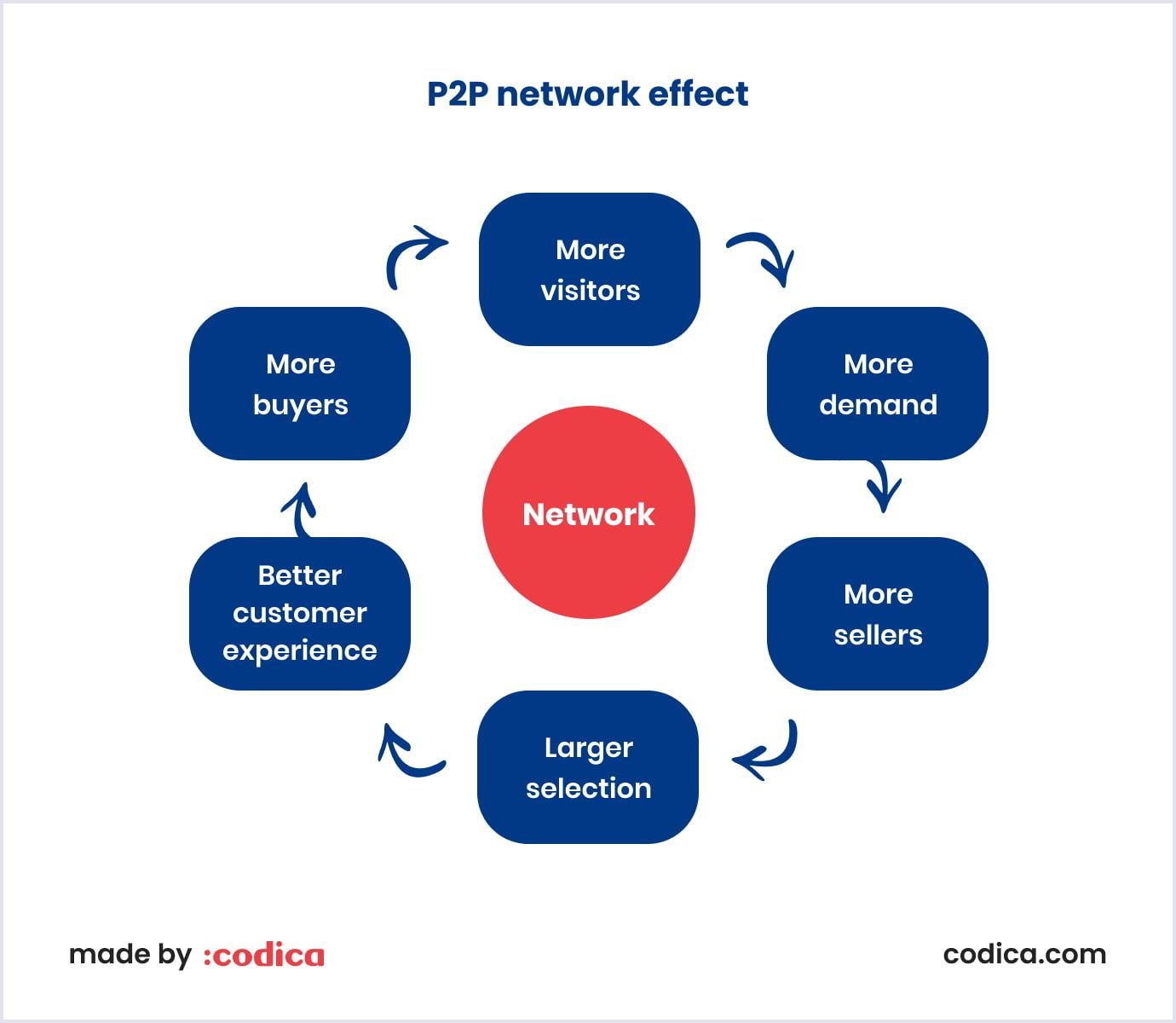
How do P2P and C2C marketplaces differ?
P2P stands for peer-to-peer, and C2C stands for customer-to-customer. Both platforms help consumers interact and deal with each other. However, the C2C model involves a third party as an intermediary between customers, while the P2P marketplace model helps customers deal with each other directly.
For example, Venmo allows individuals to transfer money to each other, Uber and Lyft let you hire rides, and Airbnb helps you rent places to stay.
Must-have features of a successful P2P online marketplace
The main features of P2P marketplaces guarantee a solid foundation for your business idea. Therefore, some of them must be applied from the very beginning of the creation of your platform.
1. User profile
First of all, an essential component of P2P marketplaces is user profiles. They help build trust between customers and suppliers on your multi-vendor marketplace.
These profiles must contain personal information, preferred payment methods, and delivery details. The registration process must be simple so users can quickly fill in their details.
During registration on the platform, buyers and sellers can add, for example, their name, address, gender, and location. These components provide information about using personal data and payment processing data on your P2P marketplace platform.
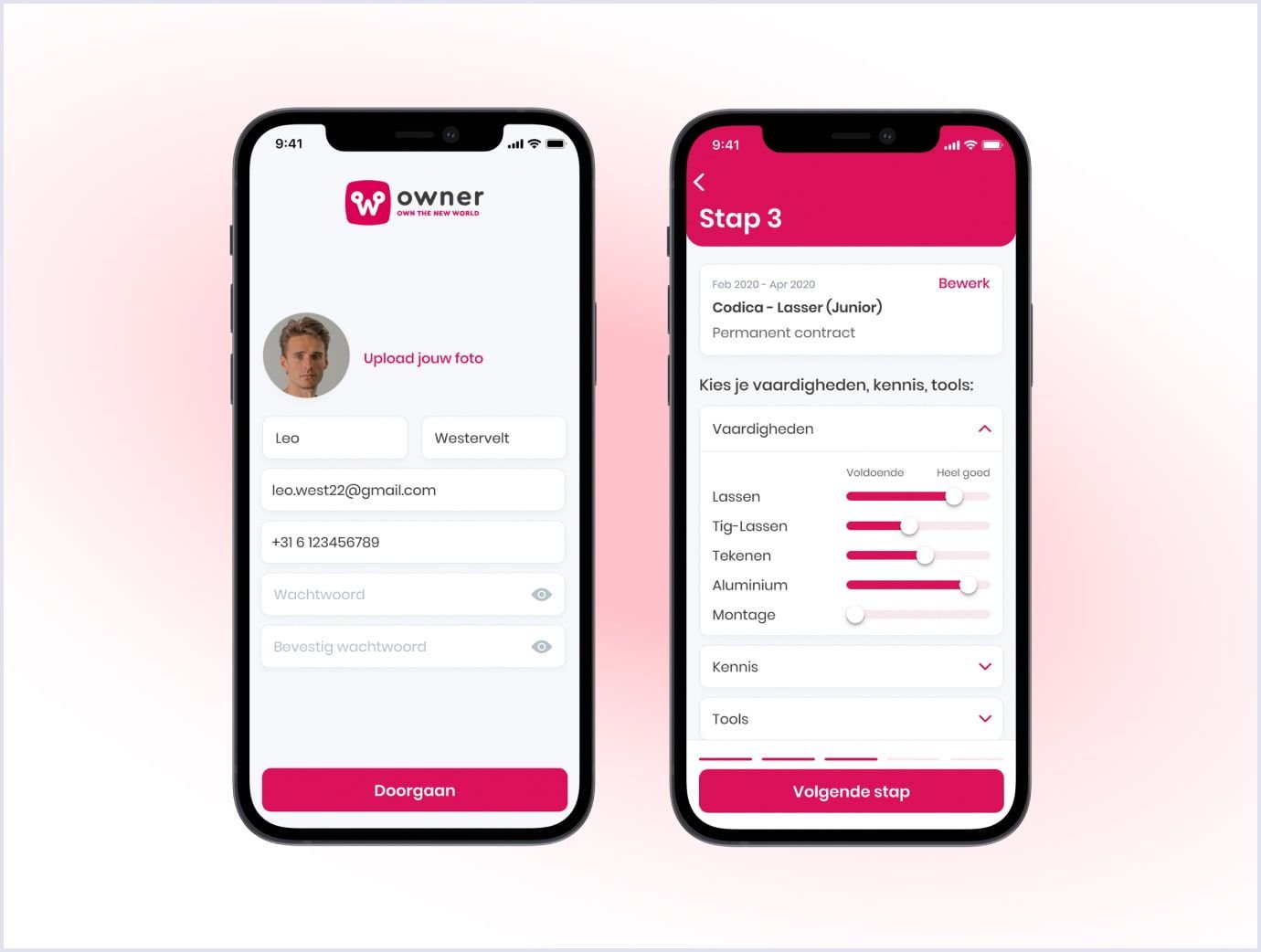
2. Listings
After creating a profile, users can find lists of goods or services available on a specific platform. In this case, listings are a vital feature for sellers to build buyers’ trust and bring value to the platform.
Therefore, providers can add, delete, edit, and publish certain elements. Customers can rate, review, and comment on specific products or services.
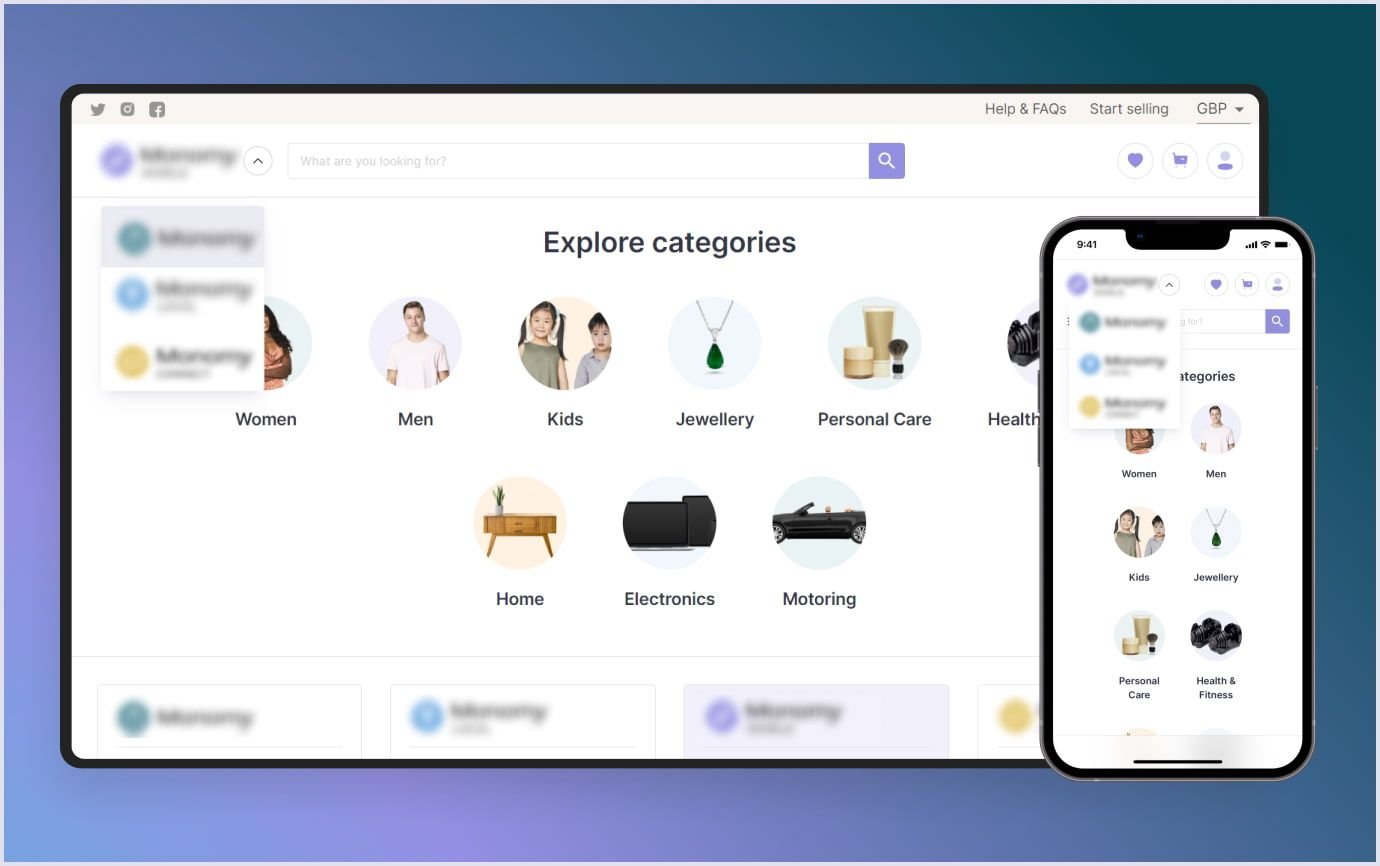
3. Checkout pages and payment system
It is also crucial to integrate modern payment systems in your peer-to-peer marketplace. For example, there are some great payment systems like Stripe, Dwolla, Authorize.net, and standard PayPal payment systems.
Also, it's a good idea to apply UI/UX best practices to create a simple and intuitive checkout page. Therefore, users can pay for their products or services in just a few clicks.
Often, users leave your online platform due to complicated checkout forms, lack of transparency, and cumbersome payment processing. Therefore, providing convenient online payments and integrations is essential to gaining trust in your brand.
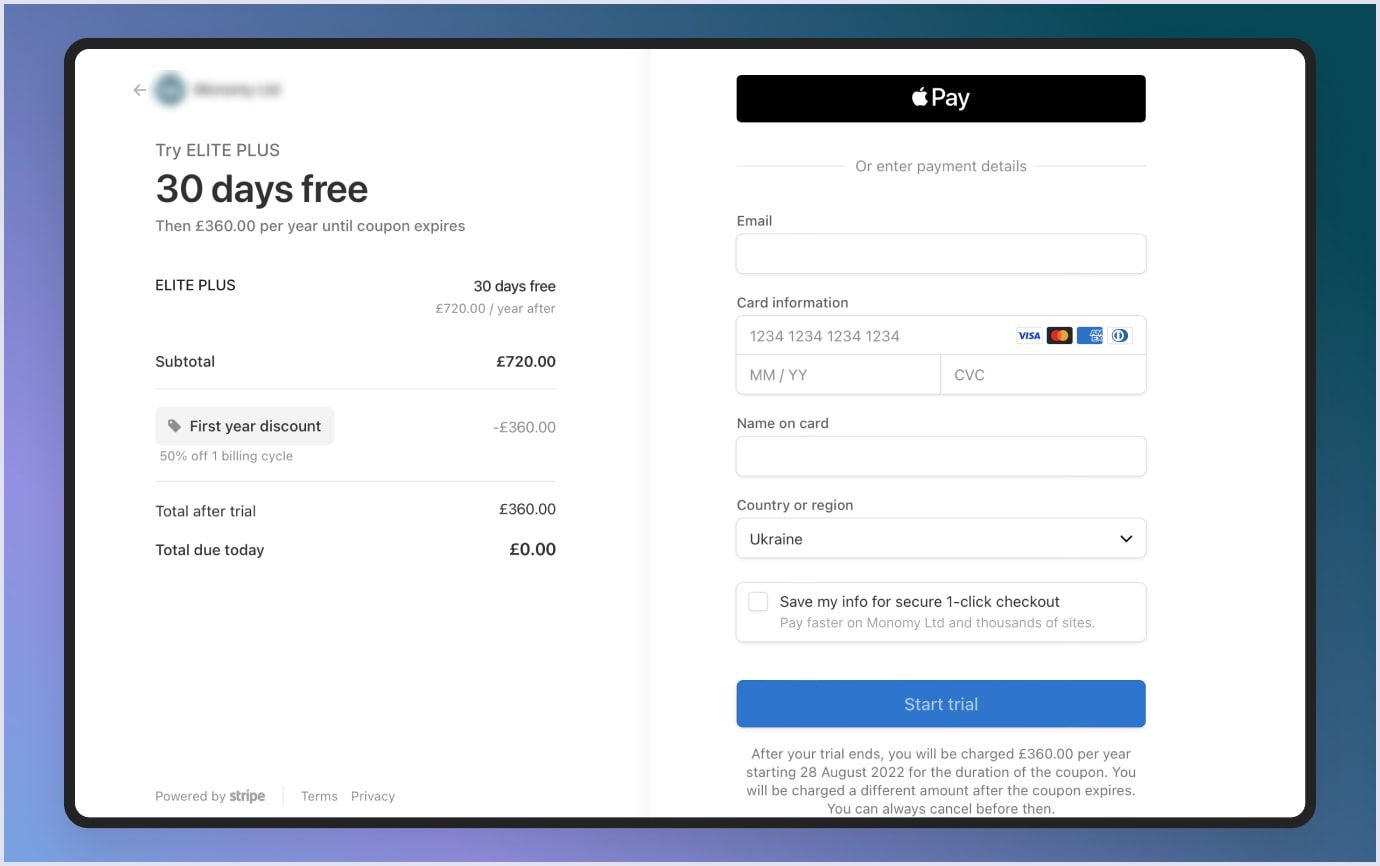
4. Feedback and reviews
Probably every business is happy to receive customer feedback, especially if there are lovely reviews. Reviews play an essential role in customer trust when choosing products or services. For suppliers, the rating system is a crucial indicator of improving the quality or maintaining the current level of their business.
So, feedback and reviews are other tools to build trust and filter users on your marketplace. This way of interacting with the marketplace's customers can improve its control quality and value.
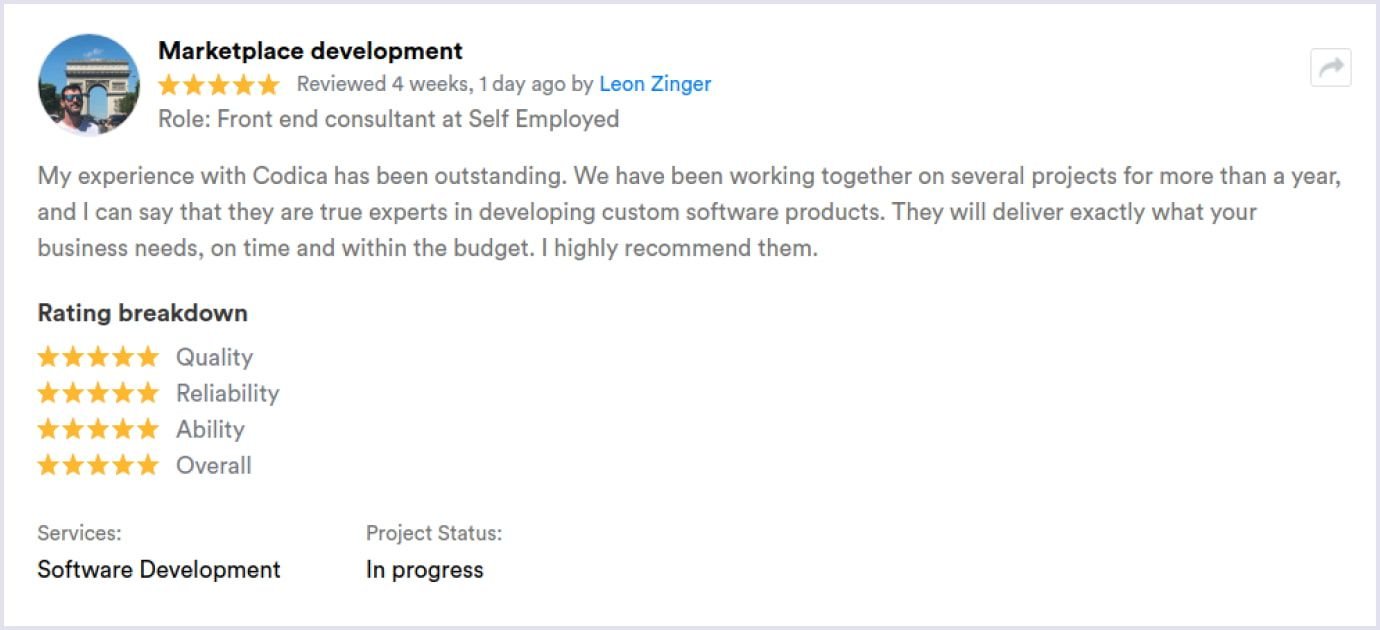
5. Communication portal
After all, building a convenient and reliable communication platform between customers, suppliers, or administrators is also necessary. It's messaging about new inquiries, transactions, or feedback.
Therefore, users should be able to write a message to the seller on the platform or give a call and receive a response. Active communication on your peer-to-peer platform will help you attract more users and ensure their interest.
Companies can also create web push notifications, effectively promoting user engagement without needing their data.
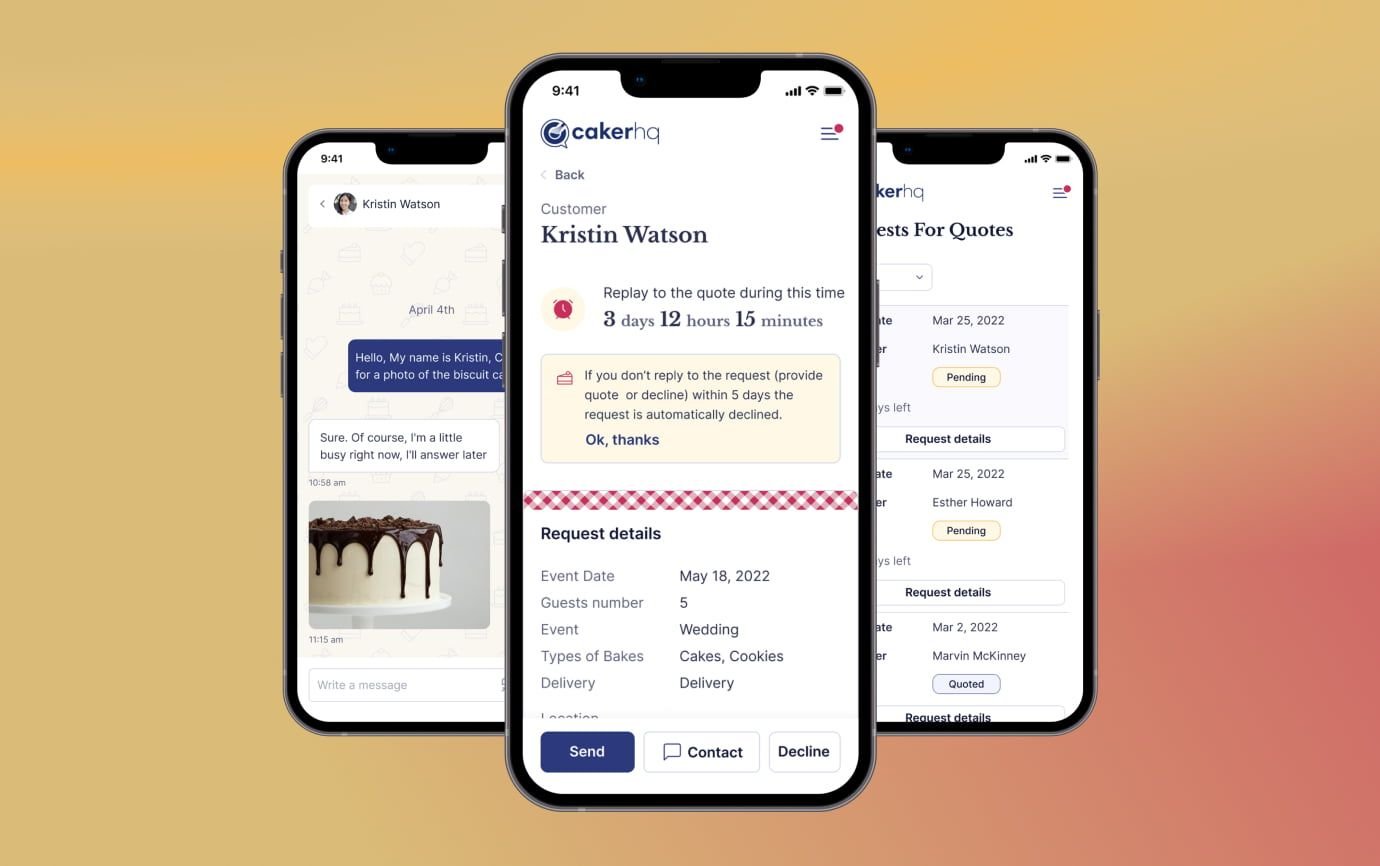
Challenges of building an online P2P marketplace
In addition to the obvious benefits of creating peer-to-peer marketplaces, you may encounter risks. We have prepared four main challenges and solutions, so you know what to expect.

Solving the right problem
Validating your idea should be a priority component when building your peer-to-peer marketplace. Solving your customers’ pain points will help your platform grow. This starting point is a cornerstone for your P2P marketplace, and you must plan it carefully.
Finding your niche and product-market fit
Choosing a narrow niche and verticals for peer-to-peer ecommerce is vital. You should focus on finding product market fit and then expand it to other categories and audiences.
Choosing your business model
The right marketplace business model directly influences your business’s profitability. Therefore, you must choose a sustainable marketplace model to scale with the company. Analyzing whether your market prices work for your sellers, customers, and business is crucial.
Building trust
As a marketplace startup, you won't have initial customer trust in your brand. To address this issue, you should test different strategies to build user trust, such as social proof and secure payments.

What do you need before creating a peer-to-peer marketplace?
Your peer-to-peer marketplace's success largely depends on your platform's functionality and interface. Therefore, below, you can find out exciting attributes of peer-to-peer platforms before creating your own marketplace.
A ready solution vs. custom development
When you create your peer-to-peer platform, your choice depends entirely on the general business idea and functions, budget, and time frame. Therefore, you can buy a ready-made platform or create it from scratch.
Using a template solution. If you are looking for a simple and fast solution, you can use open-source tools for building P2P marketplaces. A completed product will help you test your business model immediately. Also, you will save money since the developers will only deal with the customization of your project. For example, Sharetribe, Marketplacer, Near Me, or Spree Commerce are popular and reliable solutions for creating P2P marketplaces.
However, remember that you cannot add custom features to your project. Scaling and support are possible for template-based platforms, but you depend on the template provider.
Developing a new platform. Building your P2P marketplace platform from scratch gives you more room for change in every market aspect. The development team will then remove any restrictions on functionality, user interface, statistics, or other features. Moreover, developers can offer expert advice on your business idea. Finally, you will get simple maintenance since it is easier for developers to find bugs in their codes.
For example, with an online marketplace development services, Codica builds optimized and engaging P2P platforms that increase traffic volume, conversion, and grow sales. So, we will help you create a successful, scalable, and high-quality custom marketplace website that your users will enjoy.
Find the right monetization strategy
Before you start your multi-vendor marketplace development, you need to understand your business model clearly. There are several preparatory measures for forming a long-term monetization strategy:
- Define the target niche.
- Outline the crucial functionality.
- Create a business model.
- Consider scalability.
Most marketplace owners probably understand that it is vital to choose a suitable business model that would benefit the future project. But how do you determine which business strategy is best for your peer-to-peer platform? There are several online marketplace business models you can choose for your peer-to-peer marketplace.
Commission. This is the most common model for P2P marketplaces. This model charges all sellers for listing products or for each completed payment transaction (e.g., Etsy, Airbnb, Uber).
Advertising. This business approach allows advertisers to get paid for each product impression or click on a website or app ad. LinkedIn and SkillShare use this business strategy for P2P ecommerce.
Subscription. Users must pay for a monthly or annual membership that provides access to premium services or products. This peer-to-peer ecommerce model is used in particular by eBay, CrateJoy, and Rover.
On the other hand, there is a price list for those who want to sell and promote their businesses. Below is the pricing policy for sellers on eBay.
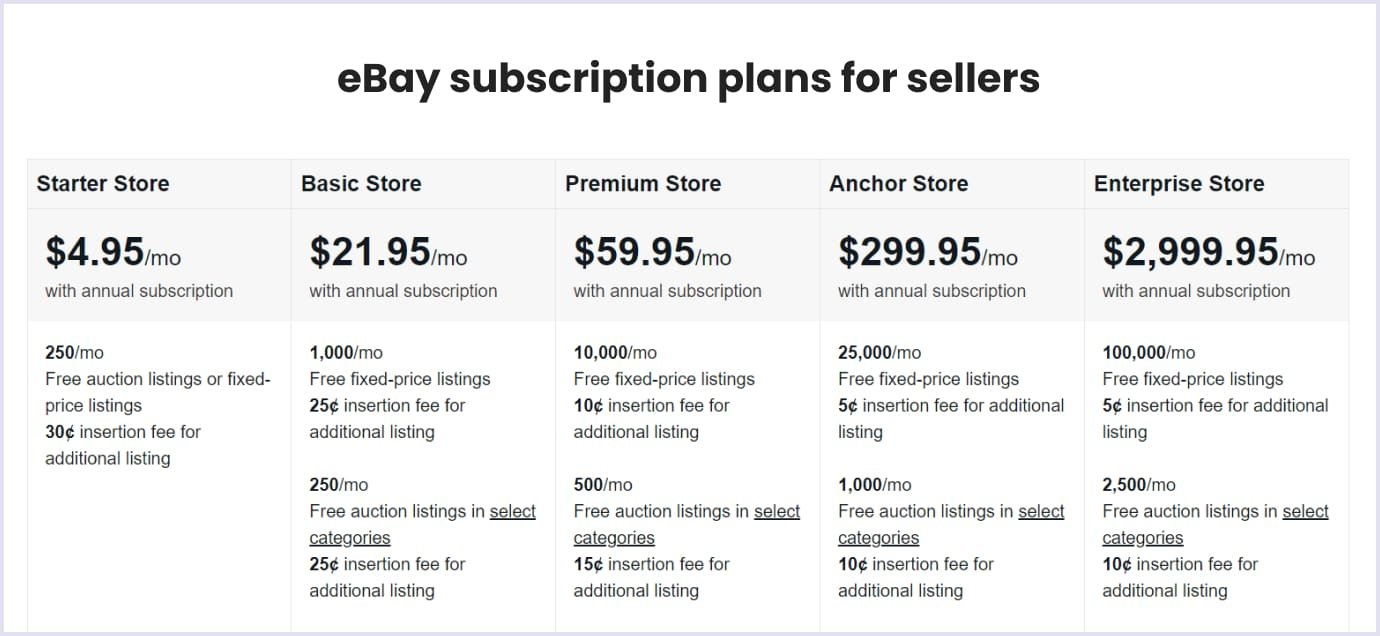
Source: eBay
Freemium. In general, sellers have free access to the platform, but there are things for which they still have to pay. For example, payment is made for placing many ads or certain advanced functions (e.g., OLX, PayPal).
You may also like: An Online Marketplace Marketing Strategy That Works in 2024
Lower costs at the beginning phase
The issue of saving money at the initial stages of creating a peer-to-peer marketplace is quite relevant among people in business. Therefore, a good idea first would be to create an MVP that will help entrepreneurs get a prototype of their project. MVP (minimum viable product) is the best approach for new product development, allowing you to test a hypothesis quickly with no significant investment.
Also, MVP services help to attract new investors. Less functionality means less development effort and a smaller budget. So, it’s the best way to validate your idea cheaply.
Moreover, on peer-to-peer websites, business founders save money on stocking or delivering. Instead, they can spend it on advertising, bonuses for customers, or other business investments.
Read also: 6 Tips for Choosing the Right Web Development Firm
How do you build a thriving P2P marketplace?
You have already familiarized yourself with the main features of peer-to-peer marketplaces. Therefore, it is essential to learn how to create these online platforms. Let's review a thorough guide on the stages of development of a successful peer-to-peer marketplace.
Research and discovery phase
As a P2P marketplace founder, you should test your business idea before building it. Thus, you will ensure you spend your resources on a viable deal.
At Codica, our experts will help you verify your idea’s business potential by conducting product discovery sessions. They provide a detailed analysis of your P2P marketplace’s target audience, competitors, feature set, marketplace tech stack, MACH architecture, and development team composition. Based on the product discovery data, we define the approximate time and cost for your project's building process.
Below, you can watch our video on the main project discovery deliverables you will get after the sessions.
Product UX and UI design
Excellent UI/UX design services will help you attract users to your convenient, delightful, and accessible P2P marketplace platform.
You can share your vision of the finished product with us at the design stage. For example, if you already have your brand’s design guidelines, our designers will consider them in the P2P ecommerce design process and give you recommendations if necessary. If we start your marketplace design from scratch, our designers will advise you on what can be done in line with your brand’s mission and business needs.
So, you will get the following services from our designers:
- UX design: our designers review the relevant market features, draw up a portrait of the target audience, and create a clickable software prototype.
- UI design: our designers style the entire e-commerce site, evaluate the state and appearance of all UI elements and font hierarchies, and develop a guide to bring all the above parts together to facilitate development.
Check our designs on our Behance profile to see how we approach project design tasks.
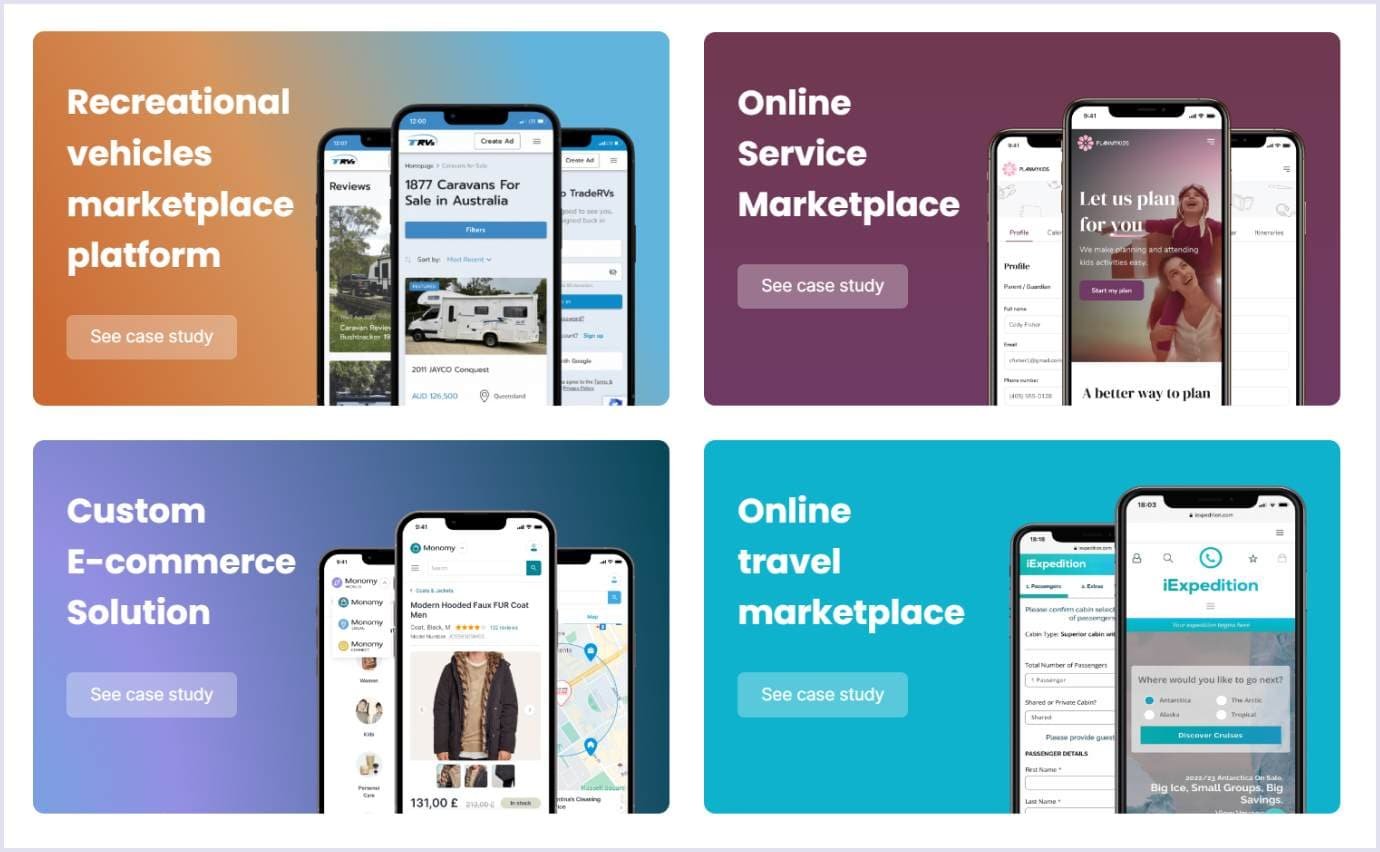
MVP development
It is a stage when your software development team starts work with the infrastructure, backend, frontend, and AI (artifical intelligence) powered technologies.
The first phase of developing your peer-to-peer marketplace is creating a minimum viable product (MVP). With an MVP, you can save your budget and analyze user feedback before making important decisions. Also, using a marketplace MVP, you can get investment for a peer-to-peer ecommerce startup.
Therefore, you should launch your peer-to-peer marketplace quickly and at a minimum cost to determine whether your platform solves customers' problems. Once your P2P ecommerce idea passes this test, try it with potential users.
Watch the video below to discover MVP services in software development and their benefits for your business.
Testing
The testing process is one of the crucial steps in online marketplace development. The software testing stage in Codica includes the following:
- Planning;
- Test development;
- Web solution launch;
- Obtained result analysis.
While creating your peer-to-peer marketplace, QA engineers work in parallel with designers and developers. They focus on specificity, accuracy, and consistency to detail the platform's nuances. After analyzing the product, QA specialists create a testing strategy.
QAs must create a single possible vision of releasing the customer's request. As a rule, the testing stage involves close interaction with the client to eliminate ambiguous interpretations of their vision.
Moreover, regression testing involves reviewing project features. That is, we ensure that the P2P ecommerce project's new and previous versions function well. Once we confirm that both versions work as intended, the project moves to production. In addition, QA services provide the necessary verification directly on the product.
At Codica, quality is our top priority when creating marketplaces. Our technical team always performs quality control and automated software testing to ensure the best results for the final product. We also test our web products on different devices and operating systems to ensure everything works correctly.
Read also: Test Driven Development: Key Benefits and Disadvantages for Your Project
Further improvements and updates
It is essential to understand that peer-to-peer marketplaces are a powerful mechanism. Therefore, our skilled team carefully maintains the database and servers, processes user complaints and suggestions, and improves response time.
You can also ask early users of your peer-to-peer marketplace to leave feedback, which you can use for further development. This additional growth allows you to update your peer-to-peer platform, add new features, and improve existing ones.
At Codica, we have a specific stack for monitoring the performance of web products. The leading monitoring solutions that receive metrics and alerts are the following:
- Prometheus. This is a monitoring system designed specifically for a dynamically changing environment.
- PagerDuty. This is a system that helps to alert and track critical errors.
- Grafana. This well-known open-source analytics solution allows us to query and visualize data and understand metrics wherever they are stored.
Related reading: How to Create a Successful Custom Web Product Step by Step: Codica's Experience
How much does it cost to create a peer-to-peer platform?
Typically, the number of development hours depends on the unique requirements of each project. Also, the total cost of marketplace website development depends on the hourly rate of the company you choose, a ready-made solution, custom MVP, or a complete package with all features, design requirements, and much more.
Our team provides you with the P2P marketplace development cost at the discovery stage so you can plan your budget. Below, we give a table of the primary steps of P2P marketplace MVP development, the hours needed for their completion, and the cost at an hourly rate of $50.
| Costs of creating a website similar to Etsy | ||
| Features | Time, hours | Cost ($50/h) |
| Design | ||
| UX Development | 64 | $3,200 |
| UI Development | 96 | $4,800 |
| Architecture | ||
| Project setup | 24 | $1,200 |
| DB structure | 32 | $1,600 |
| Integrations | ||
| Payment (Stripe or PayPal) | 64 | $3,200 |
| Shipment (Shippo) | 32 | $1,600 |
| Main functionality | ||
| Authorization and security | 72 | $3,600 |
| User profiles | 42 | $2,100 |
| Homepage | 64 | $3,200 |
| Search and filters | 72 | $3,600 |
| Product page | 32 | $1,600 |
| Reviews & Ratings | 48 | $2,400 |
| Shopping cart | 84 | $4,200 |
| Notifications | 32 | $1,600 |
| Buyer panel | 96 | $4,800 |
| Vendor panel | 120 | $6,000 |
| Admin panel | 72 | $3,600 |
| Wishlist | 32 | $1,600 |
| Non development activity | ||
| Project management | 72 | $3,600 |
| Quality assurance | 92 | $4,600 |
| Code review | 36 | $1,800 |
| Total | 1278 | $63,900 |
Codica estimates that MVP development for the P2P platform takes approximately 1,278 hours. If you take an average hourly rate of $50, building a marketplace website will start at $63,900.
Read also: How Much Does It Cost to Build an Online Marketplace in 2024
Outsourcing vs. in-house teams
Business owners usually need help deciding on the best development model for their business. In this case, such a problem can be simplified for you by comparing the advantages and disadvantages of outsourcing and in-house teams. Let's look at them in more detail.
When choosing an outsourcing model, one must consider not only the cost but also technical expertise, similar cultural and business values, and time zones. To better understand this, let’s consider the ups and downs of both outsourcing and in-house teams.
| Pros of outsourcing | Cons of outsourcing |
| Lower development cost | Less control |
| Speeds up the start | Possible challenges |
| No labor expenses | Time zones difference |
| Advanced developers | Cultural differences |
Also, business companies can calculate the software creation cost of the entire marketplace based on the in-house team’s hourly rate.
| Pros of in-house teams | Cons of in-house teams |
| Total quality control | Higher price |
| Seamless collaboration | A shortage of core skills |
| No external access to your project | Staff churn |
| Communication convenience | Long search |
Why should you build a P2P marketplace in 2024?
Now is a perfect time to develop your booming peer-to-peer marketplace. In 2024, business owners with their financial capabilities and market needs will prefer this direction of the marketplace. A peer-to-peer service marketplace or product platform has many benefits and unlimited potential for customer experience and growth.
In turn, you should take the time to test your idea, choose an appropriate business model, and provide the platform with powerful features. Also, engaging with your target audience to build trust and brand engagement is essential.
The Codica team has considerable experience developing P2P marketplaces in different parts of the world. With our professional experts, you can create a unique ecommerce marketplace solution in any niche you are interested in. Feel free to contact us if you want to turn your idea into reality. We will be happy to discuss your project details and give you a free quote.
